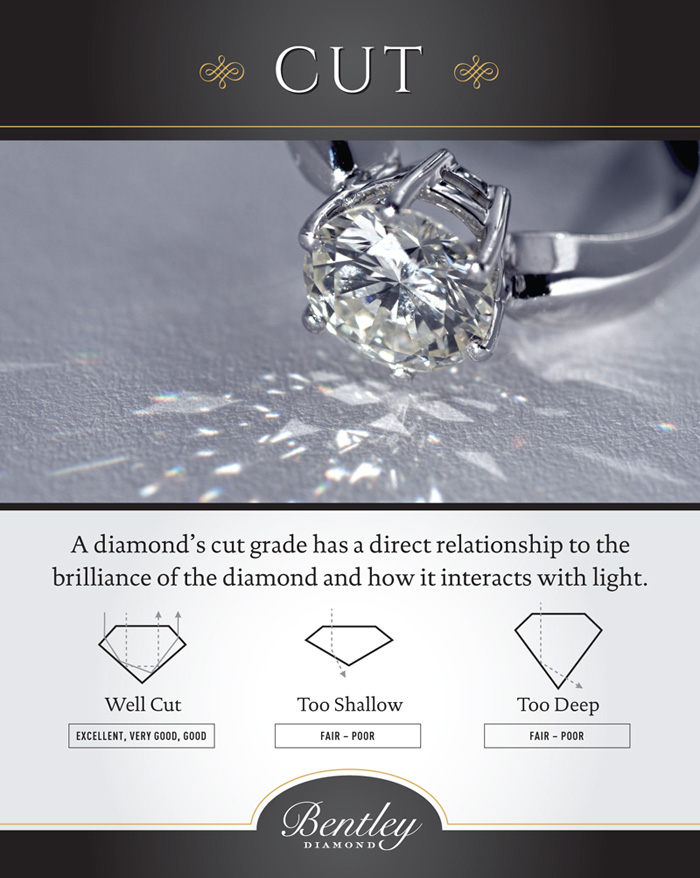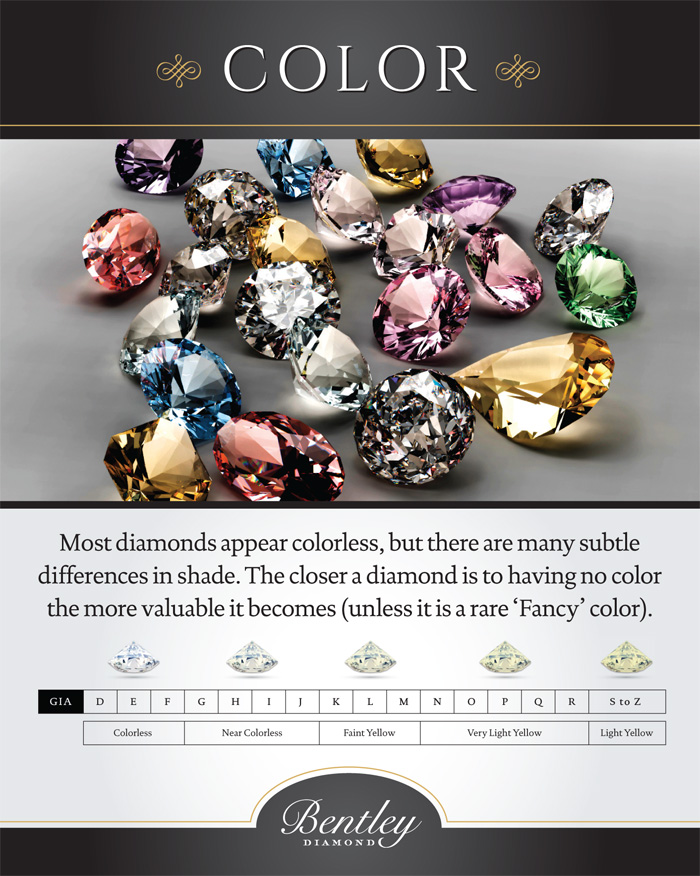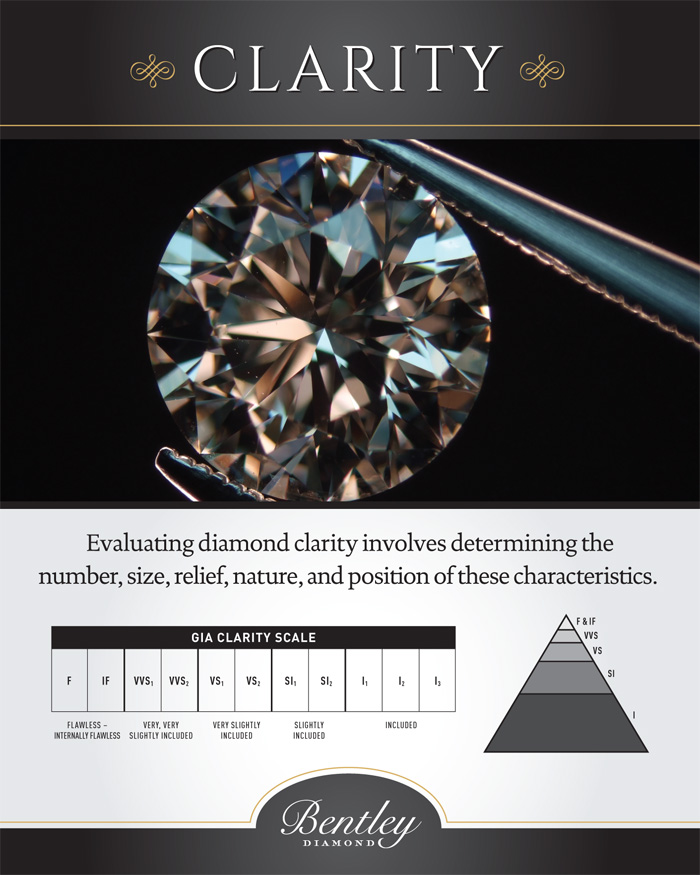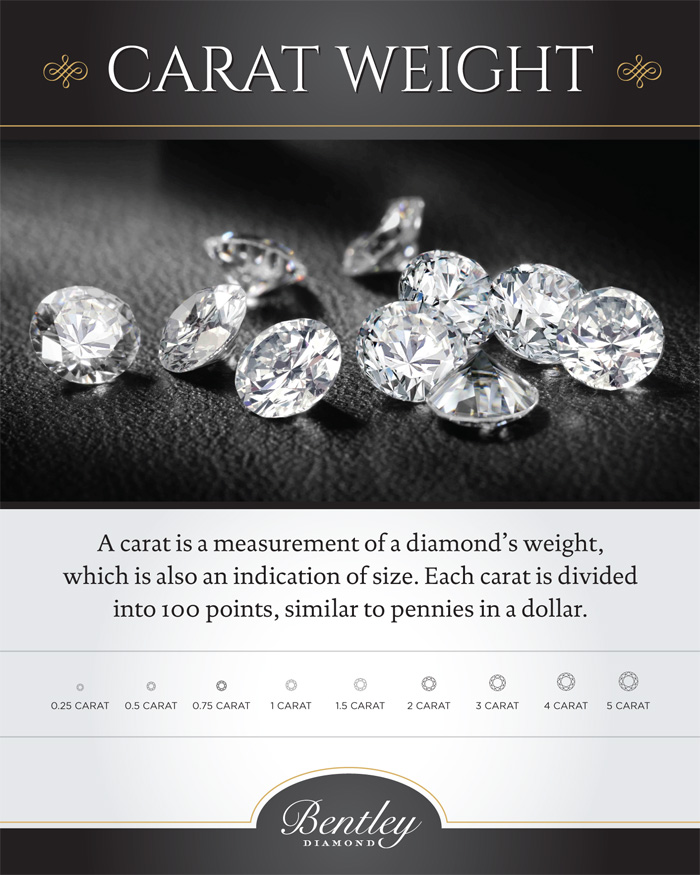Every diamond is unique.
Each reflects the story of its arduous journey from deep inside the earth to a cherished object of adornment. Yet all diamonds share certain features that allow us to compare and evaluate them.
These features of a diamond are called the 4C's and represent Cut, Color, Clarity, and Carat weight.
A certificate from the world’s most respected laboratories accompanies all fine quality diamonds from Bentley. The report will fully describe the stone and evaluate each of the diamond’s critical factors affecting it’s quality, beauty, and value.
Learn more about the Perfect Diamond and the 4C's below.
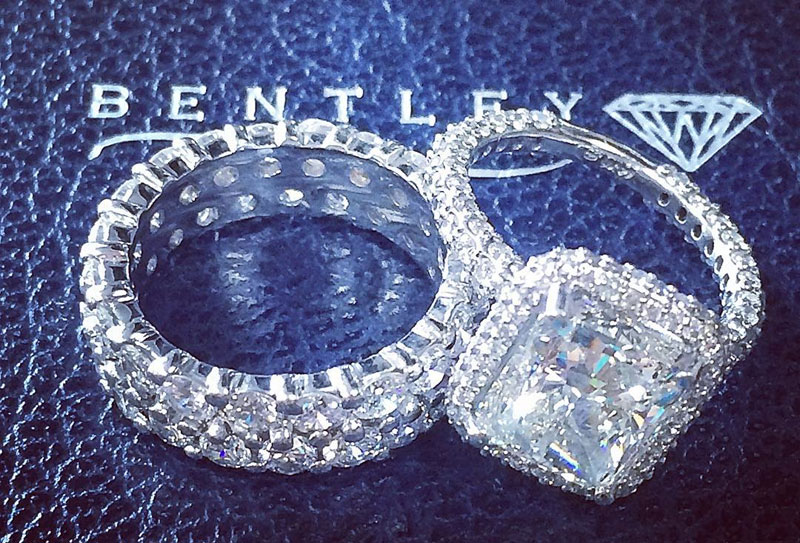
Here are some important dynamics that should be factored into your diamond purchase:

Certificate
Spread & Ratio
Appraisal
Conflict-Free
CUT

The cut of a diamond is not its shape, but the precision and polishing that went into taking it from the rough to a finished gem.
How well a diamond is cut will determine how brilliant it is. If the angles of a diamond are cut correctly you’ll see more sparkle in the diamond as it “breathes fire in your eyes.” Ideally, you want your diamond to be cut exactly proportional by a master cutter.
When evaluating the cut, you should observe the stone from the top and the sides. The table should be centered and symmetrical while the proportion of the gem should not be too shallow or deep.

The GIA Cut Scale ranges from Excellent to Poor.
A polished diamond’s beauty lies in its complex relationship with light. The magnificent display you see is made up of three attributes: Brightness is the combination of all white light reflecting from the surface and interior of a diamond. Fire describes the “flares” of color emitted from a diamond. Scintillation describes the pattern of light and dark areas and the sparkle you see when the diamond, the light, or the observer moves.
A diamond’s proportions affect its light performance, which in turn affects its beauty and overall appeal. Diamonds with fine proportions, symmetry, and polish optimize their interaction with light, and have increased brightness, fire, and scintillation. GIA assesses these factors for standard round brilliant diamonds in the D-to-Z color range.
{ Information via GIA }
COLOR

This refers to the natural color of the diamond.
Most diamonds contain naturally occurring tints of brown and yellow color but can still appear colorless. A colorless diamond is the rarest of diamonds and reflects the most light. Color grades are determined by comparing each diamond to a master scale. Each letter grade represents a range of color and is a measure of how noticeable the color in the particular diamond is.
The GIA Color Scale extends from D (colorless) to Z (light yellow or Brown). Color D, E, and F are considered to be in the exceptional color category.

The GIA Color Scale extends from D (colorless) to Z (light yellow or brown).
Although many people think of gem quality diamonds as colorless, truly colorless diamonds are actually very rare. Most diamonds used in jewelry are nearly colorless with tints of yellow or brown.
{ Information via GIA }
CLARITY

Diamond Clarity Refers to the Absence of Inclusions and Blemishes
Given that diamonds form under tremendous heat and pressure, internal and external characteristics are common. These characteristics help gemologists separate natural diamonds from synthetics and identify individual stones.
There are two types of clarity characteristics: inclusions and blemishes. Inclusions are enclosed within a diamond while blemishes are confined to its surface. Almost all diamonds contain very tiny natural markings, or inclusions, but most are not visible to the naked eye.
The GIA Clarity Scale includes eleven clarity grades ranging from Flawless to I3. The beauty of a diamond is generally not affected when it falls in the FL to SI range.

{ Information via GIA }
CARAT WEIGHT

One carat equals 200 milligrams in weight.
Diamonds are weighed on a scale, measured in carats. One carat equals 1/5 of a gram in weight. For diamonds under a carat, each carat is divided into 100 points – similar to pennies in a dollar. 0.75ct. = 75 points, ½ ct. = 50 points. .

Each carat can be subdivided into 100 'points.' This allows very precise measurements to the hundredth decimal place. A jeweler may describe the weight of a diamond below one carat by its 'points' alone. For instance, the jeweler may refer to a diamond that weighs 0.25 carats as a 'twenty-five pointer.' Diamond weights greater than one carat are expressed in carats and decimals. A 1.08 carat stone would be described as 'one point oh eight carats.'
All else being equal, diamond price increases with diamond carat weight, because larger diamonds are more rare and more desirable. But two diamonds of equal carat weight can have very different values (and prices) depending on three other factors of the diamond 4Cs: Clarity, Color, and Cut.
It's important to remember that a diamond's value is determined using all of the 4Cs, not just carat weight.
{ Information via GIA }

